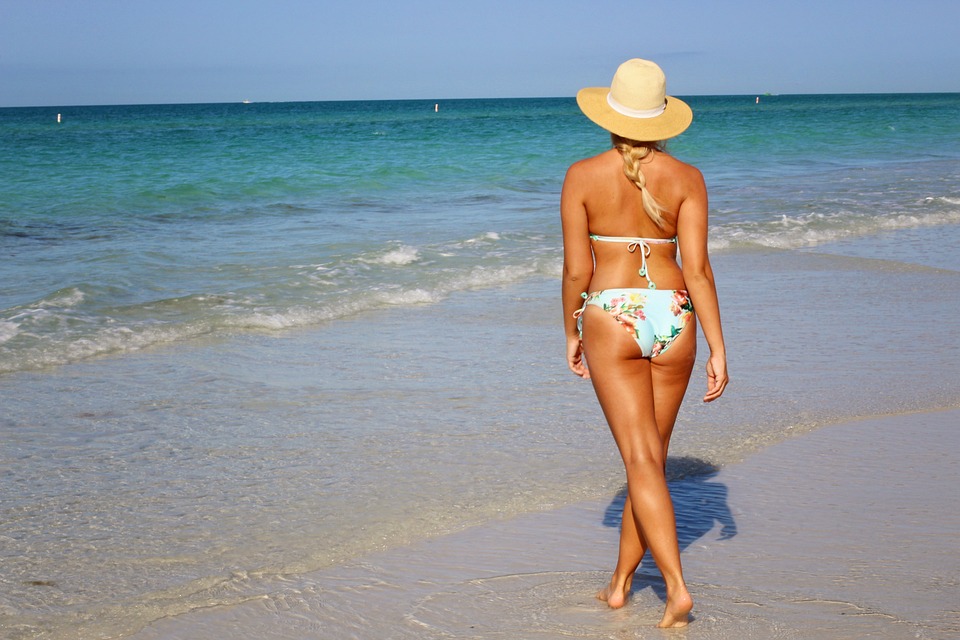Bikini Line Chafing During Pregnancy: Causes, Prevention, and Remedies
Pregnancy is a remarkable journey filled with joy, anticipation, and a plethora of physical changes. While the miracle of creating life is undoubtedly incredible, it also comes with its fair share of discomforts. One such discomfort that many pregnant women may experience is Bikini Line chafing. In this article, we will explore the causes of Bikini Line chafing during pregnancy, effective prevention strategies, and remedies to alleviate this bothersome condition.
Understanding Bikini Line Chafing During Pregnancy
During pregnancy, hormonal changes and weight gain can lead to increased friction and moisture in the Bikini area. This can cause the skin to become irritated, red, and even develop painful chafing. The constant rubbing of clothing against the sensitive skin in the Bikini Line area can exacerbate the issue, making it uncomfortable for expecting mothers.
Causes of Bikini Line Chafing During Pregnancy
There are several factors that contribute to Bikini Line chafing during pregnancy. Let’s delve into the most common causes:
1. Hormonal changes: Pregnancy hormones, such as progesterone, can affect the skin’s elasticity and increase sensitivity, making it more prone to chafing.
2. Weight gain: As the baby grows, pregnant women naturally gain weight. This extra weight can put additional pressure on the Bikini area, leading to chafing.
3. Increased moisture: Sweating is a common occurrence during pregnancy, and the excess moisture in the Bikini area can create the perfect environment for chafing.
Preventing Bikini Line Chafing During Pregnancy
Fortunately, there are several preventive measures that expecting mothers can take to minimize the risk of Bikini Line chafing. By following these tips, you can enjoy a more comfortable pregnancy:
1. Choose breathable fabrics: Opt for underwear made from natural, breathable materials like cotton. These fabrics allow for better airflow and reduce moisture buildup.
2. Wear loose-fitting clothing: Tight-fitting clothes can intensify friction and increase the likelihood of chafing. Choose loose-fitting garments that provide ample room for movement.
3. Stay dry: After showering or swimming, make sure to thoroughly dry the Bikini area. Excess moisture can exacerbate chafing, so it’s essential to keep the area clean and dry.
4. Use talcum powder or cornstarch: Applying a small amount of talcum powder or cornstarch to the Bikini area can help absorb excess moisture and reduce friction.
5. Avoid harsh soaps and scented products: Harsh soaps and scented products can irritate the skin further. Opt for gentle, fragrance-free cleansers to minimize the risk of chafing.
Remedies for Bikini Line Chafing During Pregnancy
If you are already experiencing Bikini Line chafing during pregnancy, fret not! There are several remedies that can help alleviate the discomfort:
1. Apply a soothing ointment: Look for ointments or creams specifically formulated for chafed skin. These products often contain ingredients like aloe vera or chamomile, which provide soothing relief.
2. Use a cold compress: Applying a cold compress to the affected area can help reduce inflammation and provide temporary relief.
3. Keep the area clean: Gently wash the Bikini area with lukewarm water and a mild cleanser. Pat the area dry with a soft towel, ensuring not to rub or further irritate the skin.
4. Wear loose clothing: Opt for loose-fitting clothes that don’t put pressure on the chafed area. This will allow the skin to breathe and aid in the healing process.
5. Consult your healthcare provider: If the chafing persists or becomes severely painful, it is essential to consult your healthcare provider. They can provide further guidance and recommend appropriate medical interventions if necessary.
In conclusion, Bikini Line chafing during pregnancy can be an uncomfortable and bothersome condition. However, by understanding the causes, implementing preventive measures, and utilizing effective remedies, expecting mothers can minimize discomfort and focus on the joys of their pregnancy journey. Remember to prioritize self-care and seek professional advice if needed.
Top Inquiries Regarding Bikini Line Chafing During Pregnancy
What causes Bikini Line chafing during pregnancy?
Bikini Line chafing during pregnancy can be caused by a combination of factors. The increased weight and pressure on the pelvic area can lead to friction and irritation in the Bikini Line region. The hormonal changes that occur during pregnancy can also affect the skin’s elasticity and increase the likelihood of chafing. Additionally, the use of tight clothing or underwear that rubs against the skin can further contribute to this issue.
Important information:
1. Increased weight and pressure on the pelvic area can cause chafing.
2. Hormonal changes during pregnancy can affect the skin’s elasticity.
3. Tight clothing or underwear can worsen Bikini Line chafing.
What are the symptoms of Bikini Line chafing during pregnancy?
Bikini Line chafing during pregnancy can cause various uncomfortable symptoms. These may include redness, itching, burning sensation, and tenderness in the affected area. You may also notice the skin becoming dry or developing small bumps or blisters. In some cases, chafing can lead to skin peeling or cracking, which can be particularly painful. It is important to promptly address these symptoms to prevent further discomfort.
Important information:
1. Symptoms of Bikini Line chafing include redness, itching, and burning sensation.
2. The skin may become dry or develop small bumps or blisters.
3. Chafing can lead to skin peeling or cracking if left untreated.
How can I prevent Bikini Line chafing during pregnancy?
There are several steps you can take to prevent Bikini Line chafing during pregnancy. Firstly, wearing loose-fitting clothing made from breathable fabrics can help reduce friction and irritation. Opting for underwear made from soft, moisture-wicking materials can also be beneficial. It is important to keep the Bikini area clean and dry, as moisture can exacerbate chafing. Applying a thin layer of petroleum jelly or a suitable lubricant to the area can provide a protective barrier and reduce friction. Lastly, avoiding activities that may increase sweating or rubbing in the Bikini area can help prevent chafing.
Important information:
1. Wear loose-fitting clothing made from breathable fabrics.
2. Choose underwear made from soft, moisture-wicking materials.
3. Keep the Bikini area clean, dry, and apply a protective barrier like petroleum jelly.
How can I treat Bikini Line chafing during pregnancy?
If you are experiencing Bikini Line chafing during pregnancy, there are several steps you can take to alleviate the discomfort. Firstly, gently wash the affected area with a mild soap and warm water to remove any irritants. Pat the area dry with a soft towel, avoiding any rubbing. Applying a soothing cream or ointment containing ingredients like aloe vera or chamomile can help reduce inflammation and provide relief. Avoid wearing tight clothing or underwear that can further aggravate the chafed skin. If the symptoms persist or worsen, it is advisable to consult your healthcare provider for further guidance.
Important information:
1. Gently wash the affected area with mild soap and warm water.
2. Apply a soothing cream or ointment containing ingredients like aloe vera or chamomile.
3. Avoid wearing tight clothing or underwear that can aggravate the chafed skin.
When should I seek medical attention for Bikini Line chafing during pregnancy?
While Bikini Line chafing during pregnancy is typically a common and harmless condition, there are certain situations where medical attention may be necessary. If the symptoms worsen or persist despite home remedies, it is advisable to consult your healthcare provider. Additionally, if you notice any signs of infection such as increased redness, swelling, pus, or fever, it is important to seek medical attention promptly. Your healthcare provider can assess the severity of the chafing and provide appropriate treatment options to alleviate your discomfort.
Important information:
1. Seek medical attention if symptoms worsen or persist.
2. Look out for signs of infection such as increased redness, swelling, pus, or fever.
3. Your healthcare provider can assess the severity of the chafing and provide appropriate treatment options.
1. Bikini Line Chafing During Pregnancy is Uncommon
Contrary to popular belief, Bikini Line chafing during pregnancy is not as rare as one might think. Many women experience discomfort and irritation in the Bikini area due to the changes in their bodies during pregnancy. The increased weight and pressure on the pelvic area, as well as hormonal changes, can lead to friction and chafing in the Bikini Line area. Therefore, it is important to acknowledge that this issue is not uncommon during pregnancy.
2. Bikini Line Chafing is Only Caused by Clothing
While clothing choices can contribute to Bikini Line chafing during pregnancy, it is a misconception that they are the sole cause. The rubbing and irritation in the Bikini area can also be caused by the increased moisture and sweat that often accompany pregnancy. Additionally, the skin in the Bikini area may become more sensitive during pregnancy, making it more prone to chafing even without the presence of tight or uncomfortable clothing. Therefore, it is essential to address both clothing choices and other factors that can contribute to Bikini Line chafing during pregnancy.
3. Only Overweight Women Experience Bikini Line Chafing During Pregnancy
Another misconception is that only overweight women experience Bikini Line chafing during pregnancy. While excess weight can increase the likelihood of chafing, it is not exclusive to overweight individuals. Pregnancy itself brings about physical changes that can lead to chafing, regardless of body weight. The increased weight and pressure on the pelvic area, coupled with hormonal changes, can affect women of all body types. Therefore, it is important to recognize that Bikini Line chafing during pregnancy can occur in women of any weight.
4. Bikini Line Chafing During Pregnancy is Harmless
Some may believe that Bikini Line chafing during pregnancy is a harmless and temporary issue. However, this is not always the case. Severe chafing can lead to skin breakdown, open sores, and infections if left untreated. It can cause discomfort, pain, and even restrict movement in some cases. Furthermore, the constant rubbing and irritation can have a negative impact on a woman’s overall well-being and quality of life during pregnancy. Therefore, it is crucial to address and treat Bikini Line chafing to avoid potential complications.
5. Nothing Can Be Done to Prevent or Alleviate Bikini Line Chafing During Pregnancy
A common misconception is that there is nothing that can be done to prevent or alleviate Bikini Line chafing during pregnancy. However, there are several measures that women can take to reduce the risk and manage the discomfort associated with chafing. Firstly, choosing loose-fitting clothing made from breathable materials can help reduce friction and irritation. Using talcum powder or baby powder in the Bikini area can also help absorb moisture and reduce friction. Additionally, applying a barrier cream or ointment, such as petroleum jelly or zinc oxide, can provide a protective layer and alleviate discomfort. Keeping the area clean and dry, avoiding excessive sweating, and taking regular breaks from activities that may exacerbate chafing can also be beneficial. It is important for pregnant women to consult with their healthcare providers for personalized advice and recommendations based on their specific needs and circumstances.


